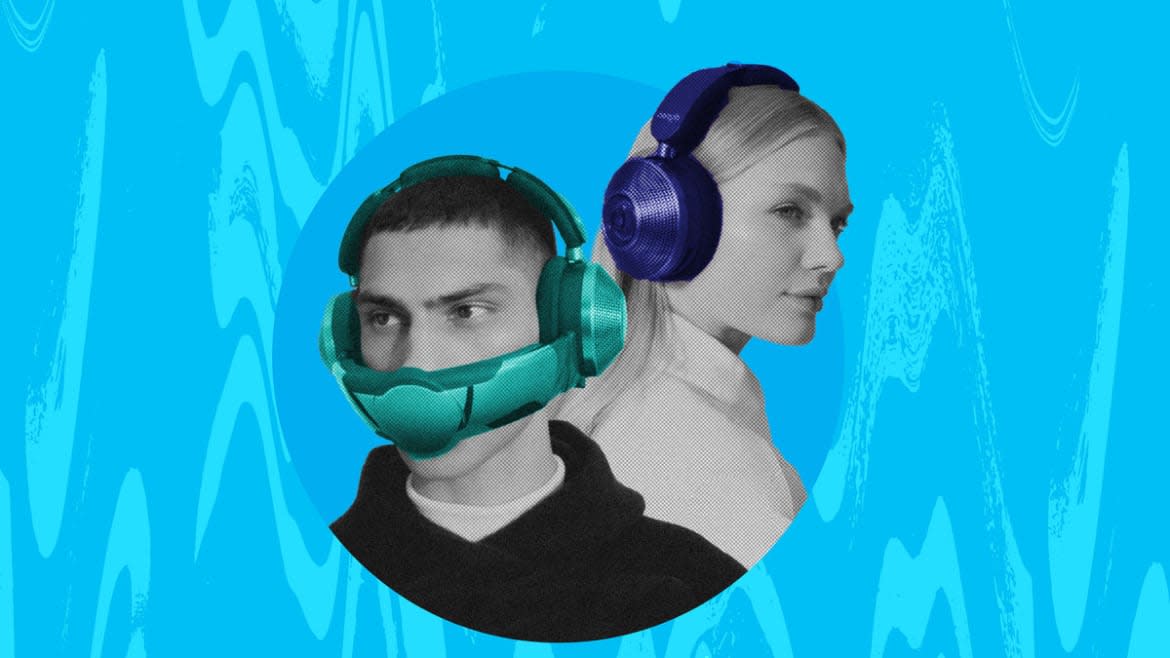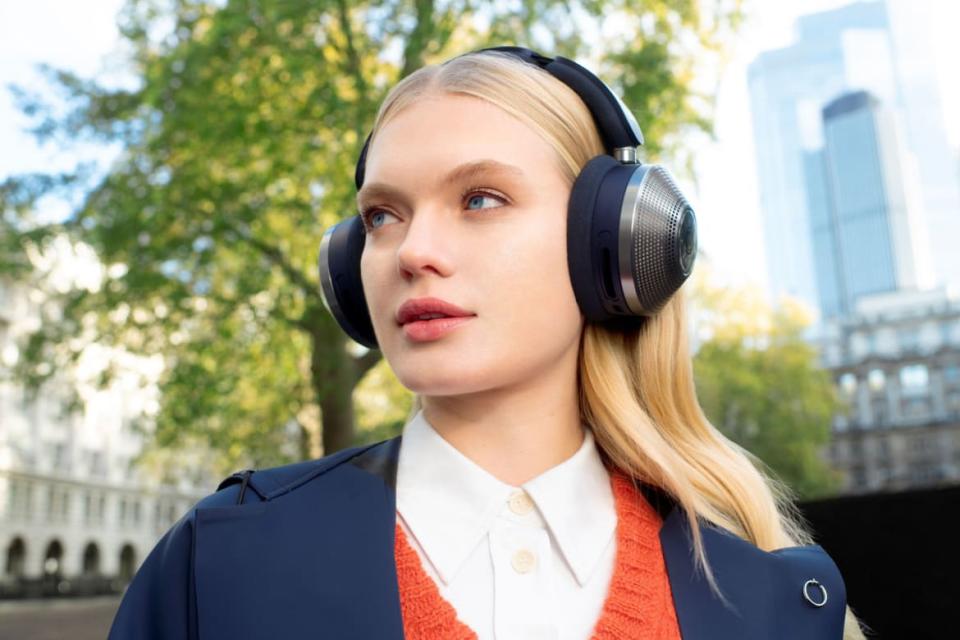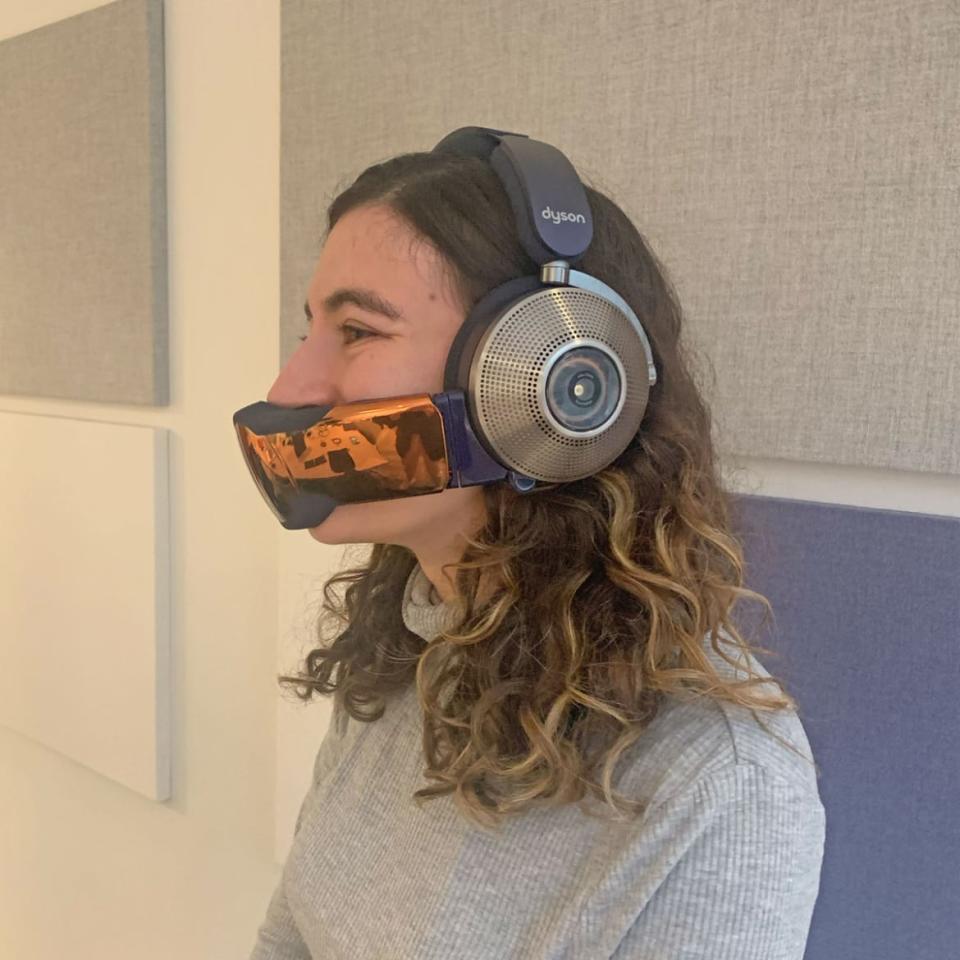These Air-Purifying Headphones Are a Great Gift for Someone You Hate

If you’re anything like me, you’re still working on remembering to check the weather before you head off to work. But the folks at Dyson (yes, the maker of vacuums, bladeless fans, and stupidly expensive hair stylers) want you to pay attention to another factor that could make or break your commute: air quality.
On an otherwise dreary New York City afternoon, I made my way to the Fifth Avenue offices of Dyson’s public relations agency to try the company’s latest product: a pair of wireless, air-purifying headphones called the Dyson Zone. According to a press release, the headphones will be available for pre-order beginning in March, starting at the low, low price of $949.
And no, it’s not meant to be a COVID thing.
“We started this about six years ago—it was never meant for viruses,” Ian Brough, Dyson’s head of product planning in environmental care, lighting, and professional, told me at the demo. “This is all about bringing what we offer indoors to the outdoor environment to make sure you’re able to breathe safe, clean air.”
Dyson’s lines of fans double as purifiers (though they would probably say that their purifiers double as heating and cooling devices), so the Zone isn’t completely out of left field for the company. But its products are largely meant to sit in homes and offices. In contrast, these headphones are designed for a person going about their day, premised on the belief that most people don’t know how dangerous and prevalent air pollution is—and if they did, they’d want protection.
I won’t lie: They were good noise-canceling headphones, maybe even great ones. When a member of the Dyson communications team switched on the music (“Counting Stars” by OneRepublic), I couldn’t hear the sound of the purifiers at work, let alone the other people in the room talking. The purified air had a slightly bitter quality to it, similar to the scent of the air that comes from the overhead vent on an airplane.
The cushions were plush and the bridge was padded, fitting well without being too tight. A visor through which purified air from the ear cushions flowed could be magnetically attached or detached. The visor is meant to sit close to the nose and mouth but not touch it, creating what Brough called a “breathing bubble” without being uncomfortable. Brough, who lives in the countryside where air quality is generally not an issue, tends to wear his pair without the visor. The visor’s material, a reflective plastic, surprised me given the headphones’ price point. (The audience for the product, I was told, are Gen-Zers and tastemakers.)

A two-layered filter sits within each side of the Zone. One layer filters out air particles with a method called electrostatic capture. A second layer of potassium-enriched carbon entraps gases like nitrogen dioxide, a pollutant that arises from burning fuel and can irritate the respiratory tract. A companion app can collect data from the headphones and track a user’s levels of nitrogen dioxide and environmental noise over time.
Importantly, however, Dyson cannot make any medical claims about the product, as a medical device would have to be approved by the Food and Drug Administration. All it can do is lay out the facts: Gases and particles seem to cause short- and long-term health effects, and the Dyson Zone stops some of these pollutants from getting into people’s respiratory systems.
Brough and his team undertook extensive computer and real-life modeling to confirm that the air their device blew over a user’s nose and mouth ended up in their lungs, even without an airtight seal. For one test, they outfitted a mannequin (named Frank) with mechanical lungs, and put Frank and the Dyson Zone in a sealed chamber to precisely measure the gases making their way in and out of Frank’s lungs.
My biggest qualms with the Dyson Zone were not its design, materials, or even its price point (although I could name countless better investments for $1,000). Because as I left the PR agency’s office and waited in the rain for the crosstown bus, the only thought going through my head was, “What in the dystopian, capitalist hell did I just experience?”
And thankfully, I wasn’t the only one who felt this way.
There’s a Horrifying Link Between Dementia and Car Pollution
“These things are terrible because only rich people can afford them,” Anthony Wexler, the director of the University of California, Davis Air Quality Research Center, told The Daily Beast. “That means if you're wealthy, you can breathe clean air—whereas if you're poor, well, too bad.”
Wexler, who if it isn’t obvious was not involved in the design of the Dyson Zone, thinks there is a clear mismatch between the people who most need a product like the Dyson Zone, and those who can afford it. Cities like Delhi, Bangkok, and Beijing have immense wealth inequality coupled with extreme air pollution, which means that “some of the worst air pollution is in places that have the poorest people,” he said. In fact, selling these headphones to affluent people may end up harming poor ones even more, as it could lessen powerful people’s urgency to pass policy and to rethink their contributions to air pollution by ensconcing them in a literal (air) bubble.
At least the premise of the headphones—that air pollution is a major health threat—stands up to scrutiny, Wexler said. “Bad air kills more people around the world than anything else,” he said. This has been the case since at least 2015, and a study published this year in The Lancet Planetary Health found that one in six deaths that occurred in 2019 could be attributed to pollution.

While scientists previously thought that air pollution did the most harm by causing and exacerbating chronic respiratory diseases like asthma, we now know that a large proportion of these pollution-related deaths are due to heart attacks, Wexler said. Exposure to particle pollution increases the risk of heart disease, but researchers are still working to untangle the connection between the two. Recently, Wexler’s research has uncovered some of the unexpected neurological effects of air pollution, including a link to Alzheimer’s disease.
Then there’s the design of the headphones. Wexler, who once sat on a judging panel for an air pollution design contest, said that the Dyson Zone immediately made him think of another tech product that was doomed from its launch: Google Glass.
“There's no way anybody's going to wear that thing, just like Google Glass,” he said, comparing the look of the Zone to a motocross helmet. Personally I thought it looked more like part of the Iron Man helmet, but point taken. Still, the device could make a big impact on some communities—no, not cyberpunk fashionistas or Silicon Valley techfluencers.
“On the positive side, this device is probably going to be great for occupational safety,” Wexler said. Fields like metalwork, agriculture, and emergency response often require workers to wear respirators to protect themselves against dangerous aerosols, but these sealed masks are uncomfortable. If an employer has the budget for it, Dyson Zones could raise personal protective equipment compliance and improve worker satisfaction.
Ultimately, solutions to air pollution need to come from policies and tech that lifts all ships.
“The bottom line is that if you want better, cleaner air, you have to emit less pollution into the air,” Wexler said. The shift toward electric vehicles will improve air quality in urban centers and reduce levels of nitrogen oxide. There are also a handful of free ways you can breathe cleaner air—when idling in traffic, drivers should turn on air circulation within their car, and people should cook with their vents on or a window open to improve air circulation.
When I asked whether he believes people have a fundamental right to clean air, Brough replied, “Absolutely.
“But,” he added, “I also think that people don’t fully understand what air actually looks like at the moment. I think a lot of people think that they’re possibly breathing clean air when they’re not.” I understood the implication to be that it’s only with a device like the Dyson Zone that a person can know for sure.
Dyson’s copy claims that its headphones ensure that “wherever you are, you can breathe purified air.” But apparently, not whoever you are.
Got a tip? Send it to The Daily Beast here
Get the Daily Beast's biggest scoops and scandals delivered right to your inbox. Sign up now.
Stay informed and gain unlimited access to the Daily Beast's unmatched reporting. Subscribe now.

 Yahoo News
Yahoo News 
